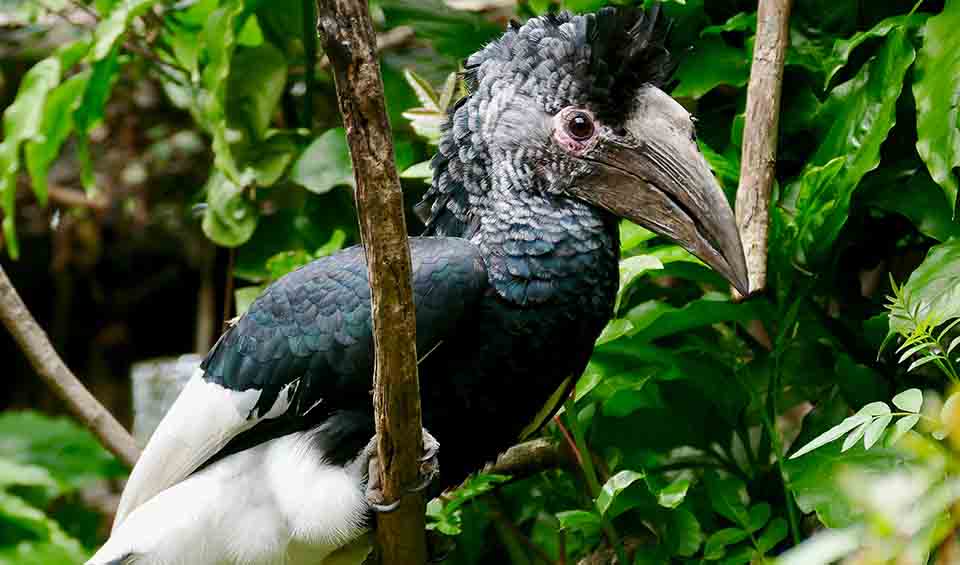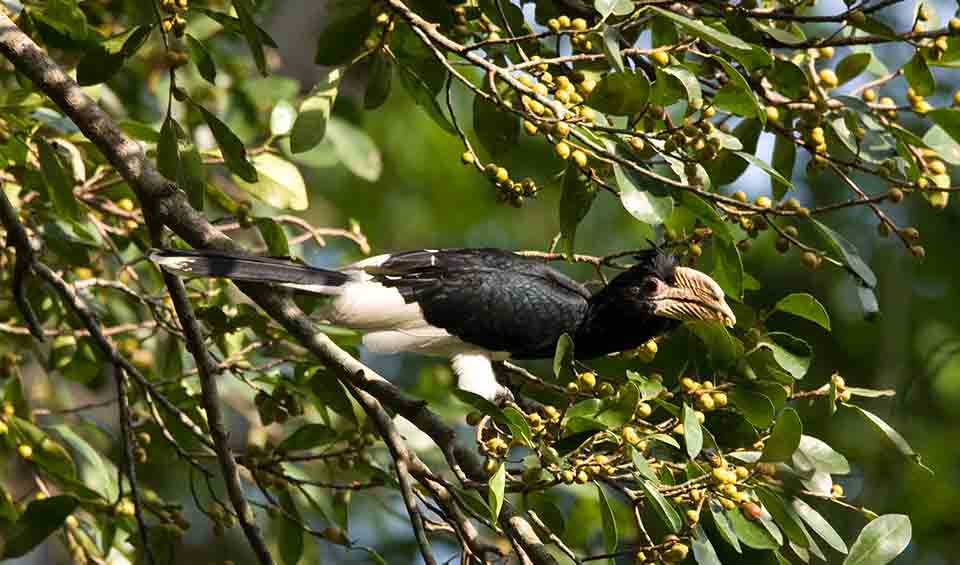Bycanistes
They don’t chew—just gulp and toss!
These birds are easy to recognize thanks to their big, curved bills topped with a prominent casque—a hollow structure that looks like a helmet and gives hornbills their signature silhouette. Bycanistes hornbills are mostly black and white, with striking contrasts in their plumage that stand out in the dense greenery of African rainforests. Despite their large size and bulky bills, they are surprisingly agile in flight and are often seen gliding between tall trees with strong, steady wingbeats.
One of the defining characteristics of Bycanistes hornbills is their loud, echoing calls that travel great distances through the forest. These calls range from hoots and grunts to yelps and flute-like notes, depending on the species. They’re not just noise-makers; these vocalizations help individuals communicate over long distances, especially in dense forest where visibility is low. You might hear a pair calling back and forth to stay in contact, or a group of hornbills sounding off as they feed high in the canopy. Their voices, along with their size and dramatic appearance, make them some of the most noticeable and memorable birds in African woodlands.
Bycanistes hornbills are frugivores at heart—fruit lovers. Figs are a particular favorite, but they also eat a variety of other fruits and occasionally supplement their diet with insects, small animals, or even bird eggs. This diet plays an important ecological role: these hornbills are key seed dispersers in the forests where they live. As they gulp down fruits and fly off, they spread seeds far and wide, helping to maintain plant diversity and forest regeneration. Because of this, they’re sometimes called the “gardeners of the forest,” a title well-earned by their constant foraging and movement across large territories.
Species in this genus
Black-and-white-casqued hornbill
Its big casque works like a built-in speaker, boosting their calls to echo powerfully across dense forests
Piping hornbill
Known for its distinctive black-and-white coloring and its loud, flute-like calls—which is how it gets its name
Trumpeter hornbill
Named for its loud, trumpet-like calls




